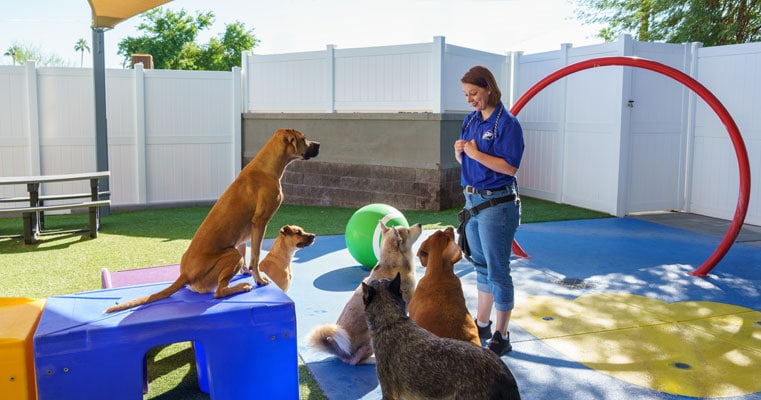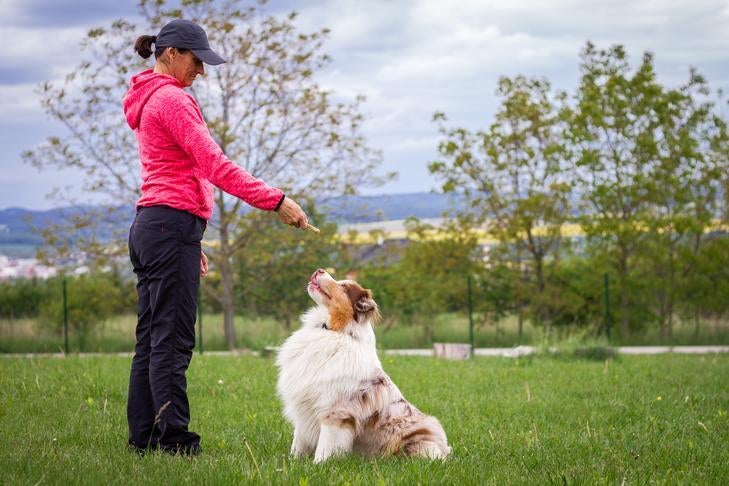Top Strategies for Effective Dog Training Techniques Every Pet Owner Should Know
Top Strategies for Effective Dog Training Techniques Every Pet Owner Should Know
Blog Article
Transform Your Dog's Behavior With Proven Training Approaches
Transforming your dog's actions needs a nuanced understanding of their private traits and demands, as well as the application of tried and tested training techniques. Consistency in your training approach not just improves obedience but also cultivates a deeper bond of trust and regard in between you and your animal.
Understanding Dog Actions
Comprehending canine actions is essential for effective training and communication in between humans and their canine companions. Pets, as social pets, exhibit a series of actions affected by genetics, environment, and experiences - Dog training. Recognizing these behaviors helps owners tailor their training approaches to satisfy the certain requirements of their dogs
Trick elements of dog habits include body language, vocalizations, and social communications. A wagging tail often shows enjoyment, while a decreased head might signify submission or concern. Understanding these signals can assist proprietors interpret their canine's psychological state and react appropriately. Furthermore, socializing plays an essential function fit actions; dogs that communicate favorably with numerous people and other animals are usually more well-adjusted and adaptable.
Additionally, identifying stress signals-- such as panting, pacing, or avoidance habits-- can prevent acceleration right into a lot more major concerns. Proprietors that are attuned to their pet's habits can produce a nurturing and safe environment, promoting depend on and improving the training process. Ultimately, a deep understanding of canine actions lays the foundation for an unified partnership and reliable training end results, making certain both pets and their proprietors prosper together.
Positive Reinforcement Methods
Favorable reinforcement strategies are widely recognized as one of one of the most efficient methods for training pets, cultivating a positive learning setting. This technique involves fulfilling preferred actions with treats, appreciation, or play, consequently encouraging the pet to repeat those actions. Unlike punitive techniques, positive support constructs depend on and enhances the bond in between the fitness instructor and the canine.
Benefits need to be provided promptly following the wanted habits to aid the canine make the connection. Uniformity is also crucial; utilizing the very same commands and rewards aids the dog comprehend what is anticipated.
It is essential to keep in mind that positive reinforcement is not about bribery; instead, it has to do with strengthening good habits. Gradually, as the dog discovers to link certain activities with positive outcomes, the frequency of rewards can be slowly reduced, transitioning to spoken appreciation or intermittent benefits. This approach not only encourages obedience yet also advertises a positive and pleased pet, making training a more pleasurable experience for both parties involved.
Attending To Common Problems
Resolving common issues during pet dog training is important for making sure a unified and successful relationship in between the pet and its proprietor. Lots of canine owners encounter behavior obstacles, such as extreme barking, jumping, and chain drawing. Understanding the source of these behaviors is crucial for reliable training.
To mitigate this, supply ample physical workout, mental excitement, and possibilities for social interaction with both human beings and other pets. Training the pet dog to sit upon welcoming can redirect this habits positively.
Leash drawing is another widespread problem, often arising from a dog's eagerness advice to check out. Using correct leash managing strategies, combined with training procedures that urge loose-leash walking, can substantially boost this behavior.
Additionally, problems like source guarding or separation stress and anxiety call for customized techniques. Progressive desensitization and counter-conditioning can be reliable in attending to these obstacles. By recognizing and proactively handling these usual concerns, dog owners can promote an extra enjoyable training experience and strengthen the bond with their canine buddies.
Consistency in Training

To achieve uniformity, it is crucial that all members of the home follow the very same training methods. For example, using the same spoken hints and hand signals ensures that the canine receives uniform messages. Furthermore, the timing of improvements and incentives need to be regular; immediate support enhances the probability that the pet dog will certainly connect the habits with the outcome.
Additionally, developing a routine can better improve uniformity. Regular practice, paired with organized timetables for feeding, walking, and play, help next dogs prepare for and comprehend their setting, making them more responsive to training. Inevitably, consistency cultivates a sense of safety and trust, equipping pets for more information effectively. By dedicating to an organized approach, fitness instructors can advertise positive behavior modifications and grow a well-mannered buddy.
Structure a Solid Bond
Just how can promoting a strong bond in between a pet and its owner enhance the training experience? When a pet really feels protected in its connection with its proprietor, it is much more likely to show positive actions and be responsive to discovering.
Moreover, a solid bond promotes much better communication. Pets are skilled at reading human signs, and a trusting relationship permits more clear signals during training. Proprietors who spend time in building this bond through play, socializing, and positive support develop an atmosphere where dogs really feel excited and motivated to discover.
Furthermore, a well-established link can reduce anxiousness and behavioral problems, as pets are less most likely to act out when they really feel comprehended and looked after. As a result, focusing on the advancement of a solid bond not just enhances the training experience however additionally contributes to a happier and extra well-adjusted dog. Inevitably, the journey of training transforms into a collective collaboration, leading to lasting behavioral enhancements.
Conclusion

Owners who are attuned to their pet's actions can develop a nurturing and secure atmosphere, fostering trust and boosting the training procedure. Eventually, a deep understanding of canine habits lays the foundation for an unified partnership and reliable training end results, making sure both pet dogs and their owners grow with each other.
Attending to typical issues throughout pet dog training is necessary for guaranteeing a successful and unified partnership in between the canine and its proprietor.Uniformity is a cornerstone of effective pet training, as it establishes a clear framework for the dog to recognize actions and assumptions.In conclusion, transforming a dog's actions with proven training techniques requires an understanding of canine behavior, the application of favorable reinforcement strategies, and a focus on consistency.
Report this page